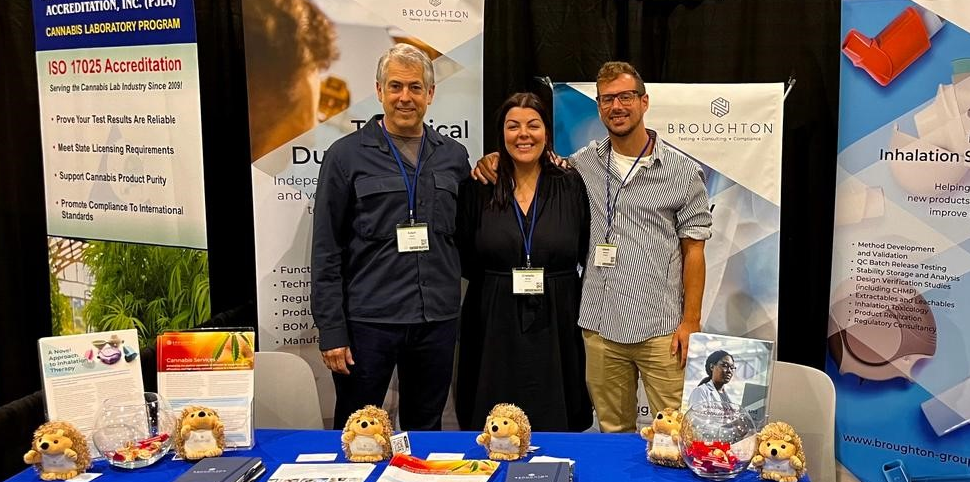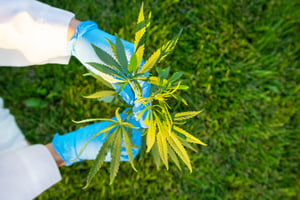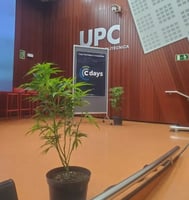As the vibrant city of Barcelona gears up for the renowned Spannabis Week, a pivotal moment for the European cannabis community is on the horizon. This event serves as a melting pot for stakeholders...
Insight into the trends and concerns of the U.S. Cannabis Industry
Cannabinoids

Oct 3, 2023 | Published by Alberto Sainz
Cannabinoids
The Cannabis Science Conference (CSC) takes place twice a year on the east and west coast of the United States. In September, I attended CSC East, where around 300 participants engaged in presentations, networking, and discussions on various topics around the science of cannabis.
The first day of the event started with a fantastic talk, “Knowledge and Art of Combining Cannabinoids for Treatment Success,“ by Dustin Sulak, who focused on the underestimated impact of minor cannabinoids in cannabis medicine. While I would probably agree with 95% of the talk, there was a quote that I found a bit surprising. It went something like this; “In ten years from now, I expect to see that minor cannabinoids are more relevant for the psychological effects of cannabis than terpenes." It was apparent from the questions after the talk that I was not the only one surprised by this prediction, as someone in the audience challenged him on this. Unfortunately, the science is not yet advanced enough to know the complete answer, so he might be right, even though I disagree and think terpenes will probably have more weight in the psychopharmacology of cannabis than minor cannabinoids. In any case, I think he may have just wanted to put an emphasis on those cannabinoids that are overlooked in clinical practice and science, so in that respect, I agree with him for highlighting this oversight. It was an insightful and engaging talk full of scientific citations and references which challenged the audience to question the status quo.
Dustin Sulak's talk was probably the most scientific of the conference from a clinical research perspective, but the conference covered a large variety of topics like analytics, cannabis growing and extraction techniques, and toxicology. There were even sessions focused on psychedelics which may surprise some. I found it very natural to introduce the topic of medicinal psychedelics at a cannabis science conference, as psychedelics share many similarities with cannabis in terms of social stigma, medicinal potential, prohibition, and lack of regulation.
I joined one of the psychedelics talks, led by the University of Miami professor Denise C. Vidot, where students from the psychedelics department were presenting their research on a variety of topics, including psychedelic drug’s potential impact on the treatment of chronic diseases. I also joined a talk by Preston Campbell on new FDA guidance on psychedelic clinical trials and a talk on Asian psychedelic plants by Dr. Aimon Kopera. Both were excellent, despite Dr. Kopera’s support for the idea that dimethyltryptamine (DMT) is produced in the human brain, which is quite a controversial topic with insufficient scientific evidence to substantiate it.
From a clinical and patient perspective, there were very interesting talks, like the panel discussion by clinical directors from Maryland dispensaries stressing the lack of standardization of cannabis products in dispensaries. They also highlighted the need for qualified healthcare providers in cannabis clinics and dispensaries. In general, the lack of standardized regulations across the different states within the U.S. was a recurrent topic at the conference.
One of my favorite sessions was given by Dr. Grinspoon, who shared his experience and medical cannabis knowledge with attendees even though he had a broken leg. I especially liked the fact that he did not demonize opioids but highlighted how these had to be used in the right way. He also spoke about how cannabis can help with addictions and the relevance of the level of scientific evidence needed in clinical practice, which is not the same to treat migraines as it would be to treat cancer.
In general, I found the CSC very insightful, and I learned a lot about the U.S. perspectives on medical cannabis. It was a fascinating opportunity to get insight into attitudes, trends, and concerns in the world’s biggest cannabis market and a great way of understanding how the industry is evolving.


